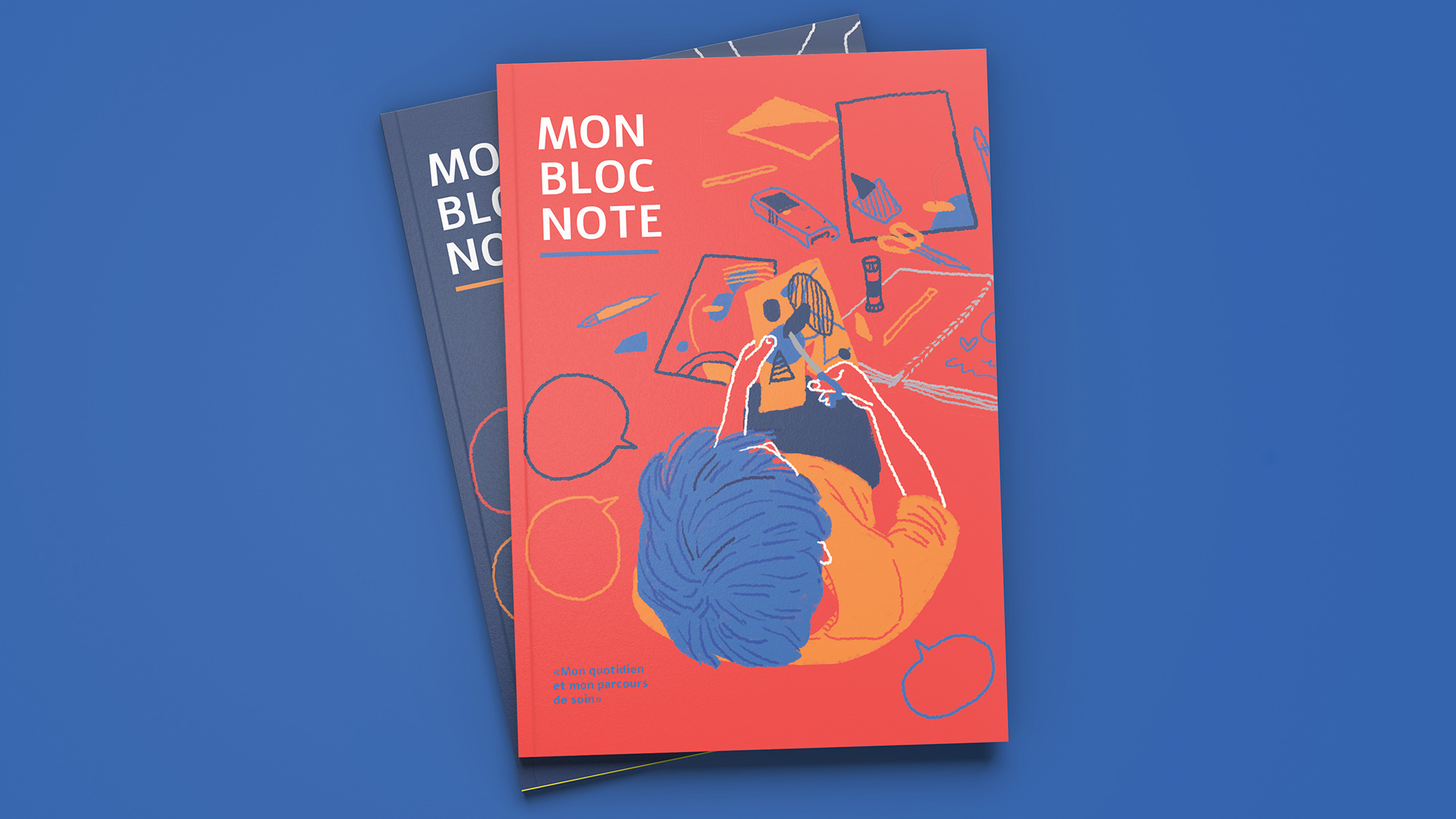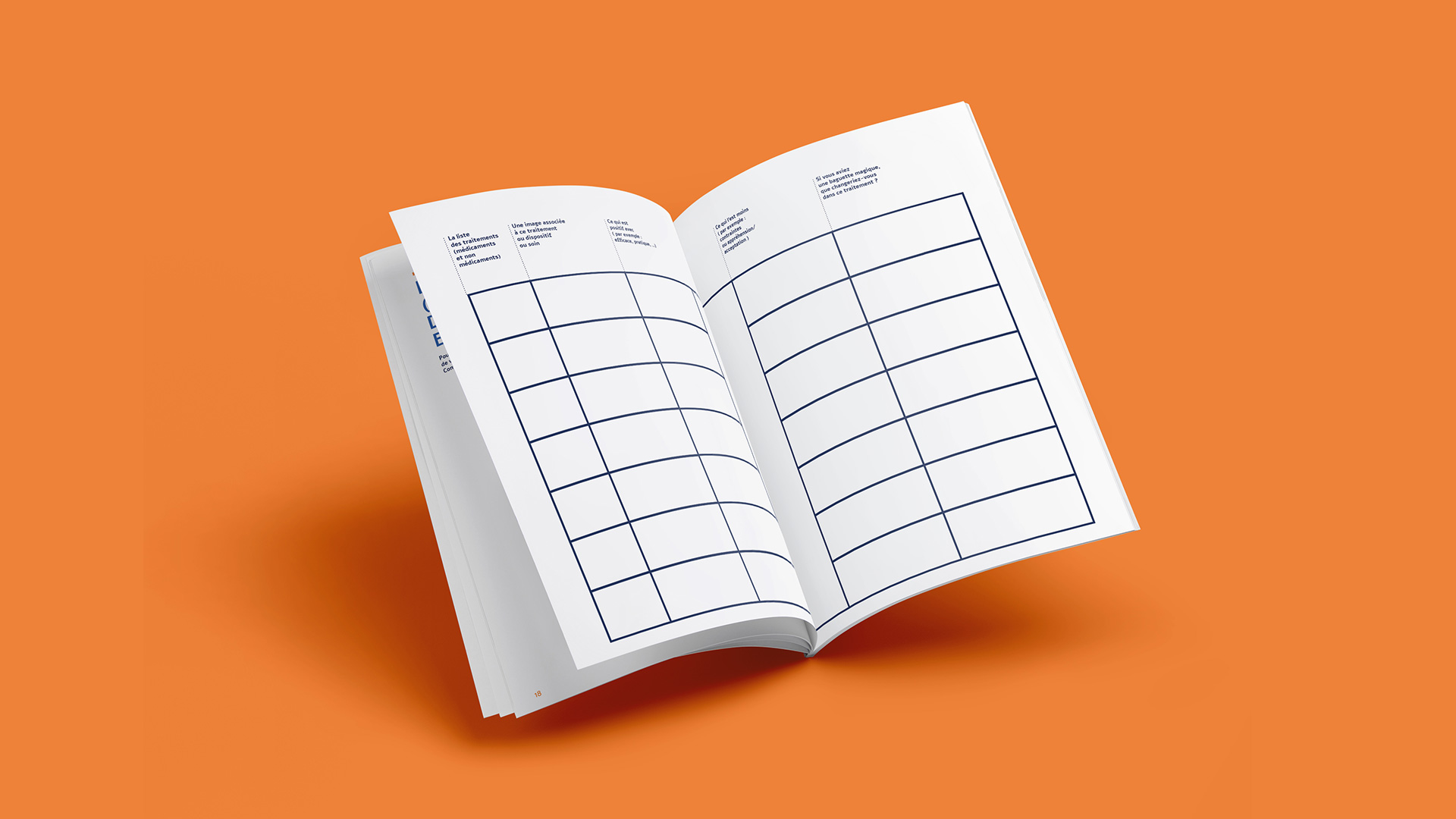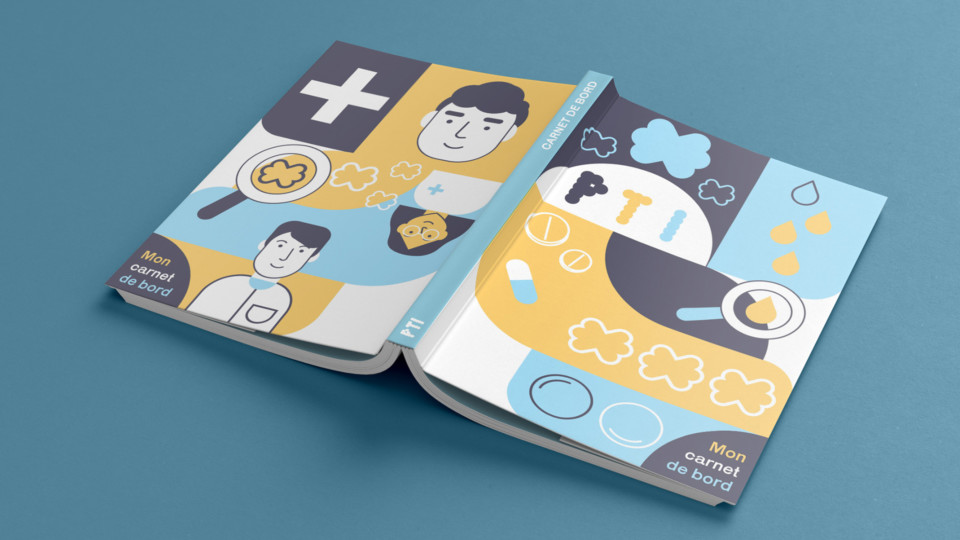Discovering an illness,
designing a Support Notebook for
Newly Diagnosed Patients
ethnographic phase – workshop facilitation – artistic direction – illustration and graphic design – mediation – information design
Discovering an illness,
Designing a Support Notebook
for Newly Diagnosed Patients
Date
– 2021
Client
– AMGEN and patient association
Role
– ethnographic research & interviews
– qualitative data analysis
– co-design workshop facilitation
– artistic direction
– illustration and graphic design
– mediation
– information design

Designing with empathy for patient empowerment.
A diagnosis of a chronic illness often marks a turning point, a moment of rupture filled with confusion, vulnerability, and emotional overload. Between relief and anxiety, patients entering this “after” phase need clarity, structure, and reassurance. However, the first steps into care are frequently marked by disorientation: inconsistent or verbal-only information, mental overload, unreliable online research, and a general feeling of isolation.
In early 2021, a medical lab involved in treating Immune Thrombocytopenic Purpura (ITP)—a rare autoimmune disorder—commissioned us to create a patient support notebook, designed to be distributed at the time of diagnosis. The aim: provide newly diagnosed adult patients with clear, accessible, and comforting information, delivered by healthcare professionals and patient associations.




Co-designing with those who know best: patients
We adopted a participatory design approach involving five volunteer patients, recruited through a patient advocacy group. Each brought unique perspectives—different backgrounds, ages, and care journeys. Ahead of interviews, they received a personal logbook to help them map their care experiences and emotional reactions.
We then conducted two-hour semi-structured interviews to explore their stories, from medical uncertainty to diagnosis, treatment, hospitalization, everyday impact and their tips. Insights from these conversations helped us understand both what was missing at diagnosis and what would have been most helpful.
These findings led to a collaborative workshop, where patients co-created the content and structure of the future notebook. Our guiding metaphor? A “care journey GPS”: something to help orient new patients through the unpredictable path ahead while reminding them that they’re not alone, that a multidisciplinary team (specialists, general practitioners, pharmacists…) will support them at every step.

Editorial design rooted in care
Patients expressed a desire for a “welcome pack”, a soft, supportive object, small enough to read comfortably at home, visually warm, and never intimidating. They favored illustrations over photographs, a minimal yet friendly tone, and a progression from emotional support to practical guidance.
From these co-created inputs, I led the artistic direction and graphic design of the notebook:
-
A clear typographic hierarchy for easy navigation
-
Calming colors and illustrations to protect readers from overly violent images
-
Gentle pacing across sections, starting with reassurance and ending with concrete resources
Once the first prototype was printed, it was sent to participants for feedback in a second workshop.Together, we scan all the pages, answer their questions and write down their comments on form and content to make the desired changes later. Their comments informed the final iteration, which was validated and sent to print in July.









By September, over 200 copies of the notebook were distributed to patients, helping them navigate the first steps of their journey with ITP. More than just a publication, this co-designed tool embodies a care-first approach to information design, anchored in lived experiences and empathy.

